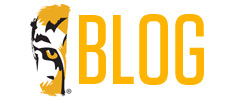You may not realize it, but you are a target for cyber criminals. Your computer, your mobile devices, your accounts and information all have tremendous value. Human error is cited in 95% of all data security incidents. Fortunately, you can help protect yourself and your family by being aware and following these tips:
What is Phishing?
Phishing originally described email attacks that would steal your online username and password. It has evolved to refer to almost any message-based attack that tricks you into giving up information or taking an action.
These attacks begin with a cyber criminal sending you a message by pretending to be someone you know, such as a friend, your bank or a well-known store. These messages entice you into clicking a malicious link or opening an infected attachment. BAM! You are now a victim.
Signs of a Phishing Attack
• Unexpected email or non-business related
• Poor spelling or grammar in email
• Unclear link when hovering over
• Email from unknown sender
• Messages that sound too good to be true

The following is a hilarious clip from Jimmy Kimmel about how some people make their passwords too easy:
This video is part of the SANS Securing The Human high-impact security awareness training on strong passwords:
Learn more at http://www.securingthehuman.org.
Tips to Protect Yourself at Home
- Always change the default admin password on your WIFi-router to a strong password.
- Configure your Wi-Fi network so that if anyone wants to join, they have to use a password and always use the latest encryption (which is currently WPA2)
- Be aware of all devices connected to your home network, including baby monitors, gaming consoles, TVs and even your car.
Tips to Protect Your Devices
- Ensure all devices are protected by strong a PIN or passcodes and running on the latest version of their software.
- If you are sharing a family computer, make sure you have separate accounts for everyone and kids do not have privileged access.
- Computers should have a firewall and anti-virus installed, enabled and running the latest version.
- Before disposing of computers or mobile devices, wipe them of all personal information.
Tips to Protect Yourself on Social Media
- Assume everything you post is public so limit what you post. Be aware that when you post pictures of your vacation, you are letting people know you are out of town.
- Never post pictures of your personal information like credit/debit cards or IDs.
- Do not use your social media account to log in to other sites; if it gets hacked, then all of your accounts are vulnerable.
- Always use two-step verification when possible.
- Use strong, unique passwords for every site.
Finally, be aware of what friends are posting about you. If they post something you are not comfortable with, ask them to take it down. If they refuse or ignore you, contact the social media site and ask the site to remove the content for you. At the same time, be respectful of what you post about others.

More Resources on Protecting Yourself Online
• Top 5 Steps to Staying Secure
• Securing the Human
• Keeping Kids Safe Online
• OnGuardOnline
How did you stack up in your own life with these tips? Tell us how you protect yourself online in the comments.




